象形・指事・会意・形声
Kanji, ideograms that constitute a bulk of the Japanese written language, come in four rough types. Pictographs, Indicators, Combographs, and Meaning-and-Sound Borrowers.
The first type is pictographs which stand in for the actual thing they represent. Some researchers claim fewer than 4% are actually pictographs.
1
象形文字
しょうけいもじ
人 biped (human)
女 woman
手 hand
田 ricefield
子 child
日 sun
月 moon
門 gate
山 mountain
川 river
弓 bow (as in “bow and arrow”)
火 fire
戸 Japanese style door
口 mouth, entranceway
水 water
雨 rain
竹 bamboo
木 tree, wood, timber
本 roots (origins)
麦 wheat, barley, oats
目 eye
牛 cow
羊 sheep
馬 horse
鳥 bird
足 Leg/foot
母 Mother
All these are nouns which really limits their applicability in the realm of human affairs.
2
指事文字
しじもじ
Indicators. Visual stand-in or pointer for a concept. Here are some examples
上 Up/above
下 Down/below
中 Middle/between
一 One
二 Two
三 Three
乃 「の」
音 Sound
天 Heaven
立 Stand up
引 Pull
公 Public
今 Now
世 Society
面 Face, facet
共 Together
仲 Relationship
末 Top end, tip
片 one of a pair
3
会意文字
かいいもじ
Combographs, kanji composed of two or more kanji to create a third meaning.
“A meeting of meanings” to forge a new alloy with different properties.
武 is composed of 戈 and 止
Military arts = Spear + Stop
「信」は「人」と「言」
Trust (Person + Speak) … Word is bond.
「相」は 「木」と「目」
Physiognomy (tree + eye)
「休」は「人」と「木」
Rest/Take Off/Take break = Person + Tree
「男」は「田」と「力」
Man = Field + Power
「即」は「皀」と「卩」
Namely = Fragrant + Seal
「赤」は「大」と「火」
Red (Big + Fire)
「香」は「黍」と「甘」
Fragrance (Millet + Sweet)
「髟」は「長」と「彡」
Hair hanging long (Long + hair)
形声文字
けいせいもじ
Semantics and Sound Borrowers, meaning and sound borrowers, soundalikes inherit a phonetic value (pronunciation / reading) from one of their subkanji, and inherit meaning from another.
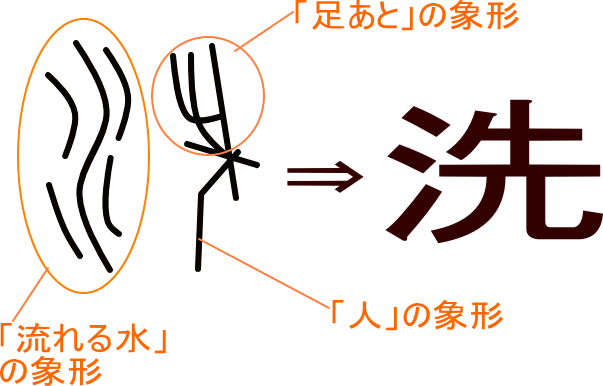
Meaning and Sound Borrowers make up 90% of Japanese Kanji.
「漢字の約9割が形声文字であるといわれている。」
Roughly 90% of Kanji glyphs used in Japanese are classifiable as Meaning and Sound Borrower kanji.
[Reference 3: shinyuzemi-niigata.wixsite ]
This amazing fact, that 90% of kanji inherit their sound value (phonetic value / reading) from a subkanji has been explored in great detail in the book The Kanji Code. Likely inspired by a dictionary of kanji from Ancient China that contained 6 groups, although the sixth group only has 1 kanji in it, and many scholars prefer to stick to 4 groups for comprehension rather than divide one of the remaining groups in two.
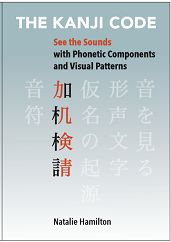

Natalie Hamilton’s The Kanji Code is a great resource in learning the phonetic readings constituting over 90% of the kanji.
形声文字は、音を表わす文字(音符)と、意味を表わす部分(意符)で構成されています。
Sound and Meaning Borrower Kanji have a phonetic helper subkanji and a meaning helper subkanji.
An exhaustive list of these “Soundalike” kanji, that usurp meaning from one and phonetic reading from another, can be found in Reference 4 where they also show derivations like the image above.
| 紙(シ) = 糸+氏(シ) | 町(チョウ) = 田+丁(チョウ) |
| 姉(シ) =女+市(シ) | 理(リ) =王+里(リ) |
In the kanji characters above we can see that the phonetic reading is inherited from the right-hand side (Reference 5).

Here’s a graphical synopsis of the four kinds:
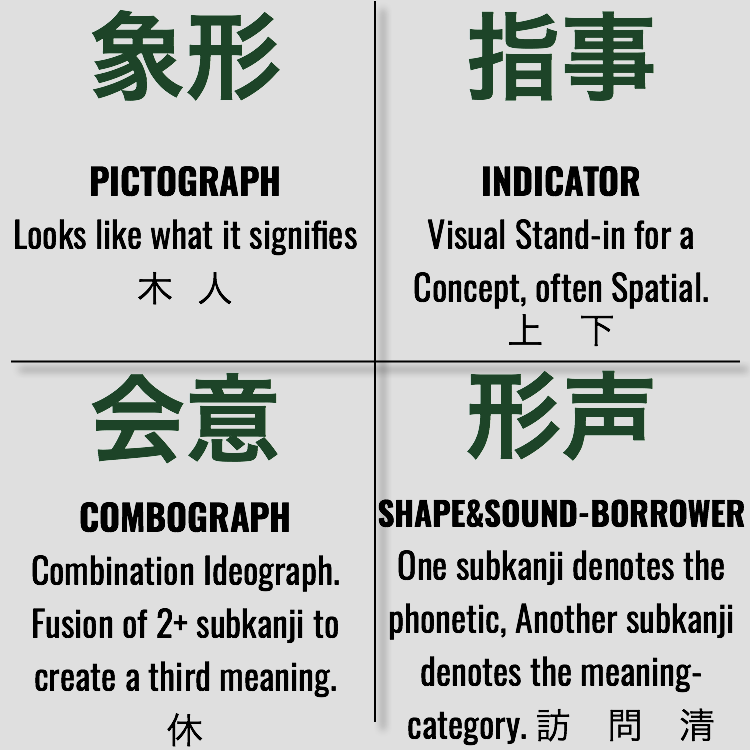
Roughly speaking, we can put a coarse approximation to the number of kanji in each category:
- Pictographs (3-4%)
- Indicators (1%)
- Combographs (5-6%)
- Meaning-and-Sound-Borrowers (90%)
also called Shape-and-Sound-Borrowers.
Thanks for reading, we hope that you’ll use this new knowledge to master the kanji swiftly!
Master kanji like never before with the lessons specially crafted for long-term retention at Japanese Complete. Join the online course today.
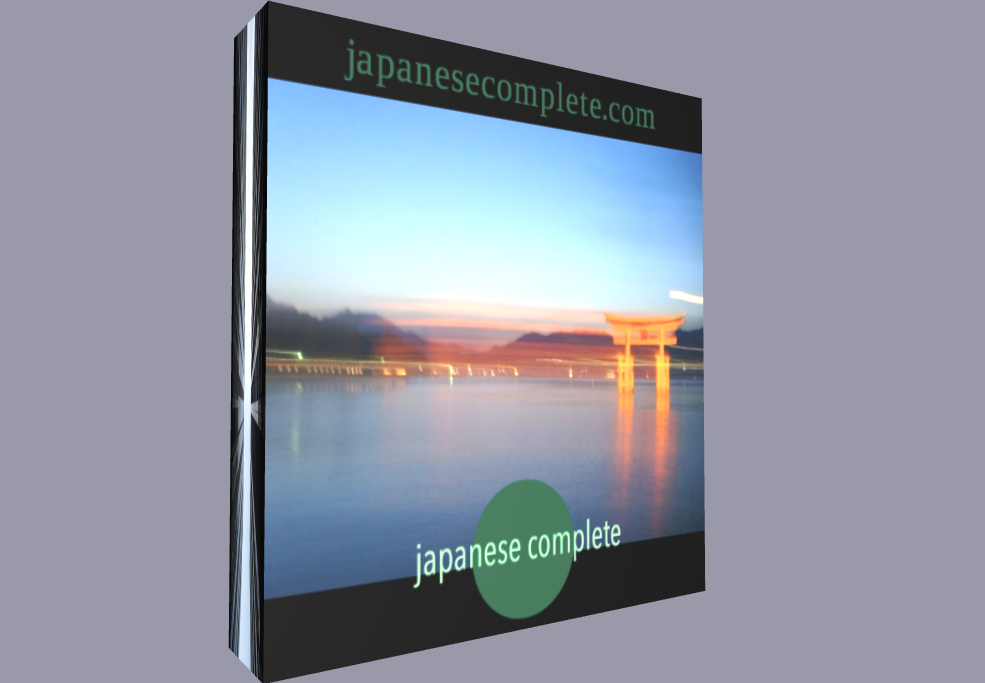
- https://www.weblio.jp/wkpja/content/%E4%BC%9A%E6%84%8F_%E4%BC%9A%E6%84%8F%E3%81%AE%E6%A6%82%E8%A6%81
- https://en.wikipedia.org/wiki/Kanji#Types_of_kanji_by_category
- https://shinyuzemi-niigata.wixsite.com/index/single-post/2017/12/06/%E3%80%90%E6%BC%A2%E5%AD%97%E3%80%91%E2%91%A0%E8%B1%A1%E5%BD%A2%E3%83%BB%E6%8C%87%E4%BA%8B%E3%83%BB%E4%BC%9A%E6%84%8F%E3%83%BB%E5%BD%A2%E5%A3%B0%E6%96%87%E5%AD%97
- https://okjiten.jp/19-keiseimoji.html
- https://katekyo.mynavi.jp/juken/9182
- Types of Kanji (Originally 6) are largely derived from Xu Shen’s work from 100 CE, presented in 121 CE.
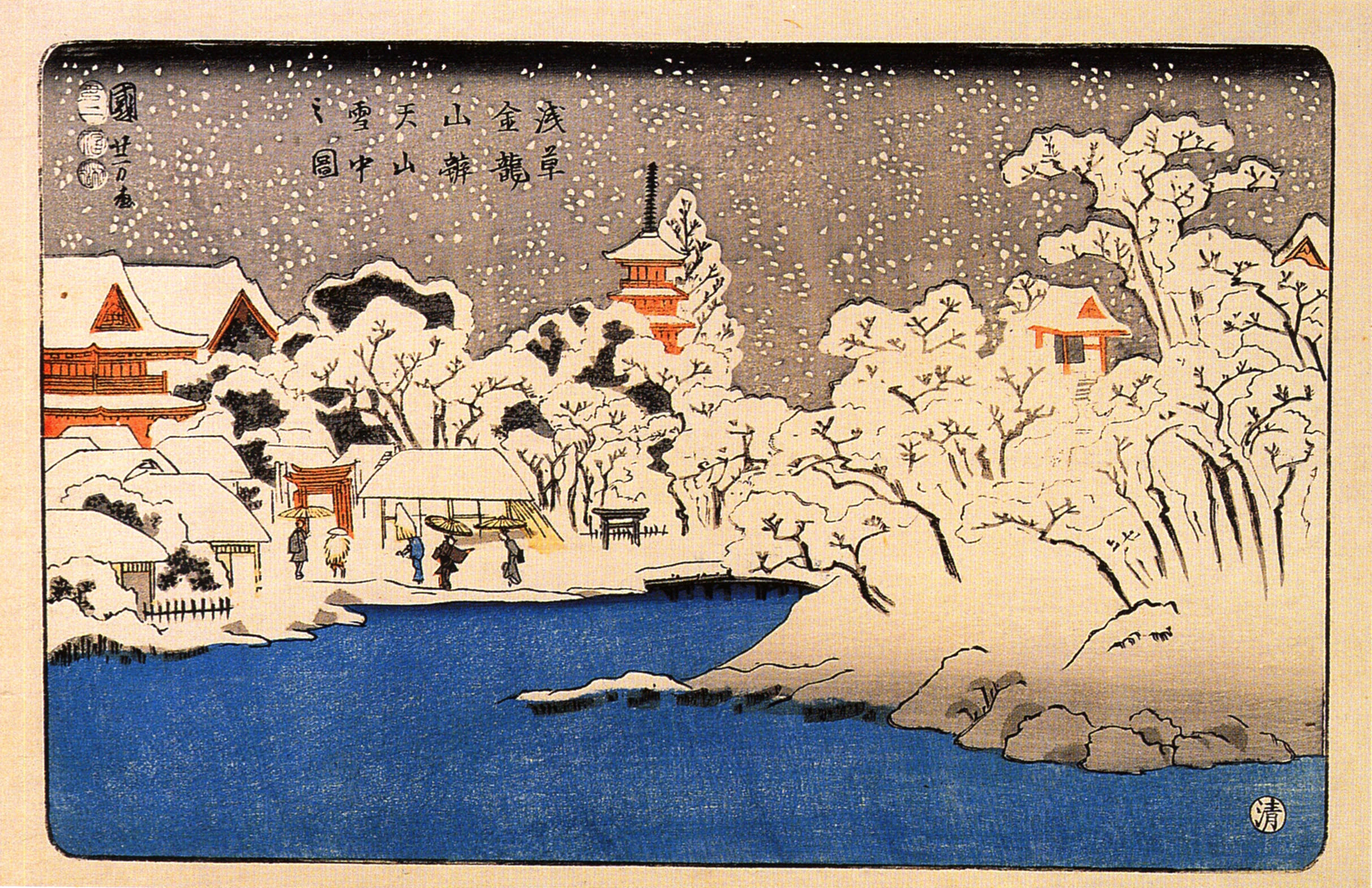
One thought on “The Four Types of Kanji”